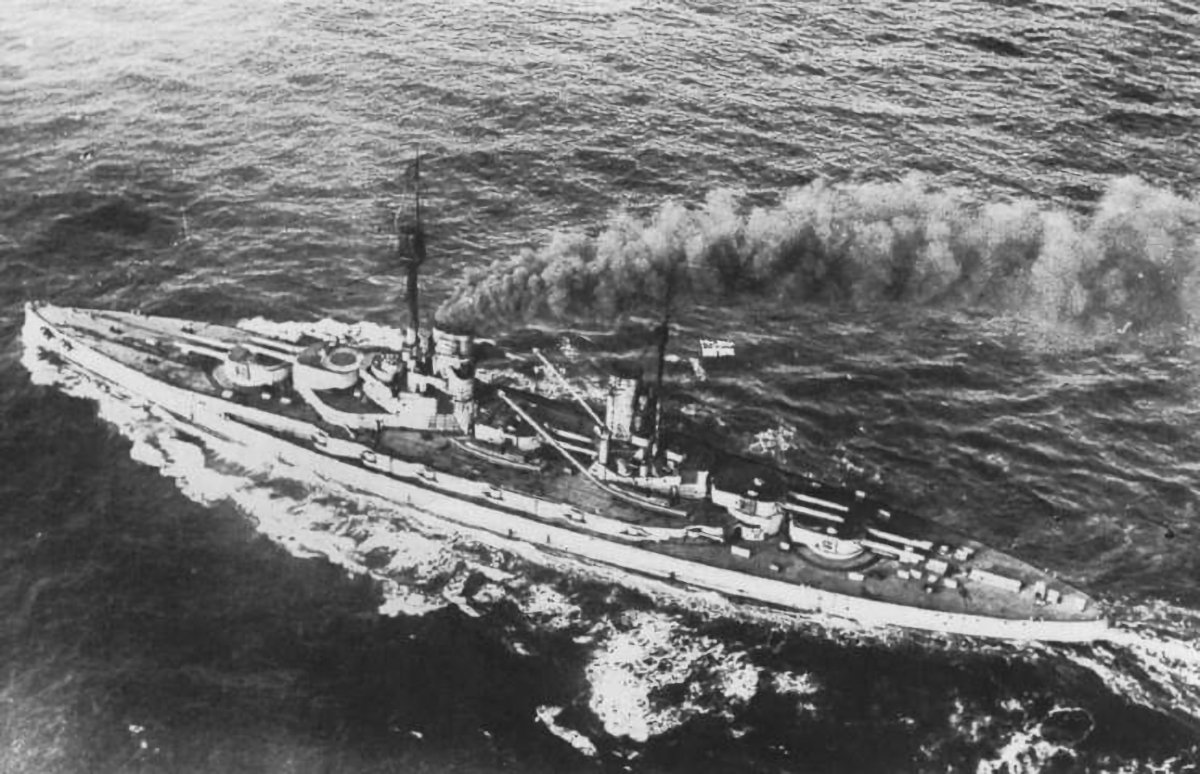German Battleship SMS Großer Kurfürst
SMS Grosser Kurfürst[a] was the second battleship of the four-ship König class. Grosser Kurfürst (or Großer Kurfürst) served in the Imperial German Navy during World War I. The battleship was laid down in October 1911 and launched on 5 May 1913. She was formally commissioned into the Imperial Navy on 30 July 1914, days before the outbreak of war between Germany and the United Kingdom. She was armed with ten 30.5-centimeter (12.0 in) guns in five twin turrets and could steam at a top speed of 21 knots.
Along with her three sister ships, König, Markgraf, and Kronprinz, Grosser Kurfürst took part in most of the fleet actions during the war, including the Battle of Jutland on 31 May and 1 June 1916. The ship was subjected to heavy fire at Jutland, but was not seriously damaged. She shelled Russian positions during Operation Albion in September and October 1917. Grosser Kurfürst was involved in a number of accidents during her service career; she collided with König and Kronprinz, grounded several times, was torpedoed once, and hit a mine.
After Germany’s defeat and the signing of the Armistice in November 1918, Grosser Kurfürst and most of the capital ships of the High Seas Fleet were interned by the Royal Navy in Scapa Flow. The ships were disarmed and limited to skeleton crews while the Allied powers negotiated the final version of the Treaty of Versailles. On 21 June 1919, days before the treaty was signed, the commander of the interned fleet, Rear Admiral Ludwig von Reuter, ordered the fleet to be scuttled to ensure that the British would not be able to seize the ships. Unlike her sister ships, Grosser Kurfürst was raised in 1938 for scrapping and subsequently broken up in Rosyth.














